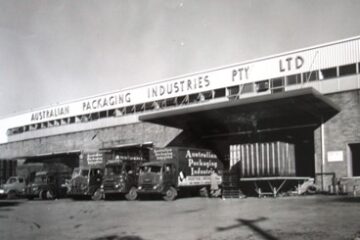Pleun Hitzert left ‘s-Gravendeel in 1980 with his wife Hennie and his daughters. Here he built a piece of ‘Hoeksche Waard’. Including a mill, for which the one in his birthplace stood model.
He based his final design on De Lelie from his native village Puttershoek, but he also used the characteristics of the Landzigt flour mill in Zuid-Beijerland. He bought the old mill rod of Landzigt. This is now the tail end of the mill. Other crucial parts were also shipped from the Netherlands.
He named it The Lily, also known as The Lily Dutch Windmill, near the towns of Amelup and Borden in the Great Southern region of Western Australia.
The Lily is a 16th-century Dutch design windmill of brick construction with 24.6-metre diameter sails. The mill was built by Pleun between 1991 and 1997 using thousands of handmade stones from a burned-down factory from 1905. It is a flour mill equipped with one set of millstones
It is the only working windmill of traditional construction on mainland Australia. Its uniqueness in the Australian landscape combined with the proximity of the Stirling Range.
It has become a popular tourist destination. We visited it in 2003.
They have here their own vineyard (The Lily Wines), an airstrip for twin-engine aircraft, a reconstructed train station from 1924 an airplane. The Dakota C-47 served in the Dutch East Indies from 1944. Bought as a wreck it was converted into a luxury residence for two people.
Paul Budde (2021)





